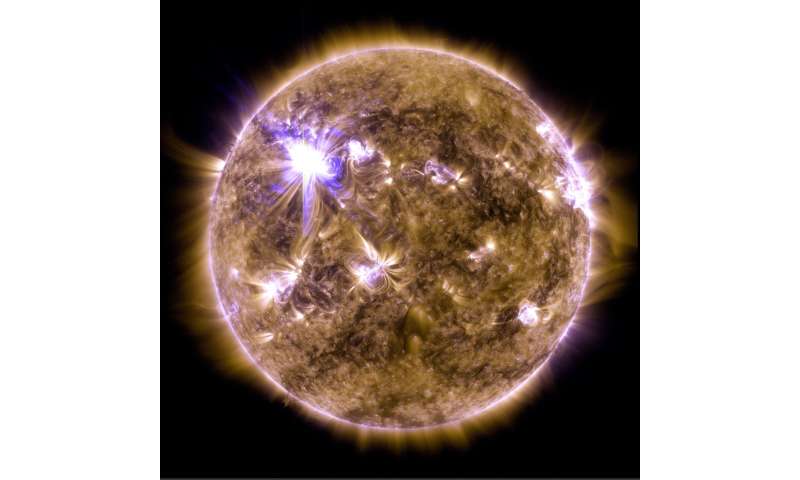New analysis method predicts disruptive solar flares

Solar flares are intimately connected with the sun's magnetic field. While the lines of Earth's magnetic field are straight and static, running from the south pole to the north pole, the surface of the sun is a chaotic sea of ions and heat, making its magnetic field lines wildly more complicated.
Some models suggest that solar flares occur when many magnetic field lines merge into one far larger loop. This can be caused by something as small as a single cosmic particle striking the surface—if the conditions are right. The new prediction method uses satellite images to find the places on the sun where conditions are ripe for these magnetic reconnections, and therefore solar flares. These conditions can also suggest how big a potential flare can be.
"At some positions on a mountain, a small crack can trigger an avalanche," said Kanya Kusano, a professor of Earth and space science at Nagoya University in Nagoya, Japan, and lead author of the study. "But in other places, only a big crack will trigger it. We implement our theory to calculate how many magnetic reconnections, at a certain position, are required to trigger a solar flare."

More information: Kanya Kusano et al. A physics-based method that can predict imminent large solar flares, Science (2020). DOI: 10.1126/science.aaz2511
Provided by Inside Science, American Institute of Physics
This story is republished courtesy of Inside Science. Read the original story here. Used with permission. Inside Science is an editorially independent news service of the American Institute of Physics.
No comments:
Post a Comment